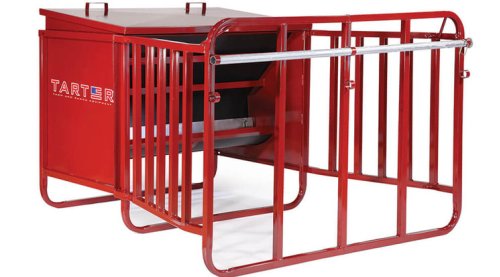

This is particularly beneficial where sward quality has declined with significant accumulation of dead material towards the base. These options also facilitate creep grazing which will allow the calves to graze the higher quality leafy grass while cows can be used to clean out swards. Another involves a custom made adjustment to allow a gate to be left slightly ajar with creep access to the adjoining field. One option is to raise the electric wire to allow calves to pass underneath. There are practical, cost effective alternatives. There may also be hassle involved in moving the feeder particularly where cattle are being moved regularly in a paddock system or in periods of wet weather when the weight of a tractor can cause damage. 3-Alternatives to creep feederĪlthough a traditional roofed creep feeder will keep feed dry, it usually means that all calves cannot feed at once. For this reason, bull and heifer calves should be grouped separately and where possible, further subdivision of well conformed and lesser conformed types will facilitate a higher level of feeding for muscled types which can achieve the maximum live weight gain response. Traditional bred heifer and steer calves can be prone to laying down fat at the higher feeding levels, therefore reducing the response to creep feeding. Live weight gain response to creep feeding is affected by calf type, with an additional 1kg live weight gain per 4-5 kg concentrate achievable in muscled continental type bull calves. Generally 2-3 kg per calf per day is offered, dependent on calf type. An example of a suitable creep concentrate mix is as follows: Barley 57.5 per cent, 25 per cent Beet Pulp, 15 per cent Soyabean Meal and 2.5 per cent Minerals/Vitamins. Simple concentrate mixes consisting of a few quality ingredients are superior to those containing a higher number of inferior ingredients. Target crude protein content of 16 per cent and metabolisable energy (ME) content of 12.5 MJ/kg DM. With this in mind, only quality ingredients should be used. The purpose of a creep feed is to supplement the calf’s original diet of milk and grazed grass in order to achieve increased calf performance. If you choose to creep feed calves at grass this autumn, the following five tips will increase your chances of a return on investment.” 1-Choose quality ingredients However, where milk supply has declined rapidly and grass quality and quantity are poor, creep feed will be a worthwhile investment. Nigel Gould, a Beef and Sheep Development Adviser at the College of Agriculture, Food and Rural Enterprise (CAFRE) said: “Creep feeding may not be as beneficial where calves will be housed for a period pre-weaning and/or where grass quality can be maintained into the autumn.

A simple adjustment to an existing gate can facilitate creep feeding and creep grazing.


 0 kommentar(er)
0 kommentar(er)
